1. Torabinejad M, Corr R, Handysides R, Shabahang S. Outcomes of nonsurgical retreatment and endodontic surgery: a systematic review. J Endod. 2009; 35:930–937. PMID:
19567310.

2. Ng YL, Mann V, Rahbaran S, Lewsey J, Gulabivala K. Outcome of primary root canal treatment: systematic review of the literature -- Part 2. Influence of clinical factors. Int Endod J. 2008; 41:6–31. PMID:
17931388.

3. Del Fabbro M, Corbella S, Sequeira-Byron P, Tsesis I, Rosen E, Lolato A, Taschieri S. Endodontic procedures for retreatment of periapical lesions. Cochrane Database Syst Rev. 2016; 10:CD005511. PMID:
27759881.

4. Estrela C, Pécora JD, Estrela CR, Guedes OA, Silva BS, Soares CJ, Sousa-Neto MD. Common operative procedural errors and clinical factors associated with root canal treatment. Braz Dent J. 2017; 28:179–190. PMID:
28492747.

5. Gaêta-Araujo H, Fontenele RC, Nascimento EH, Nascimento MD, Freitas DQ, de Oliveira-Santos C. Association between the root canal configuration, endodontic treatment technical errors, and periapical hypodensities in molar teeth: a cone-beam computed tomographic study. J Endod. 2019; 45:1465–1471. PMID:
31575389.

6. de Pablo OV, Estevez R, Péix Sánchez M, Heilborn C, Cohenca N. Root anatomy and canal configuration of the permanent mandibular first molar: a systematic review. J Endod. 2010; 36:1919–1931. PMID:
21092807.

7. Kang M, In Jung H, Song M, Kim SY, Kim HC, Kim E. Outcome of nonsurgical retreatment and endodontic microsurgery: a meta-analysis. Clin Oral Investig. 2015; 19:569–582.

8. Riis A, Taschieri S, Del Fabbro M, Kvist T. Tooth Survival after surgical or nonsurgical endodontic retreatment: long-term follow-up of a randomized clinical trial. J Endod. 2018; 44:1480–1486. PMID:
30154003.

9. Chércoles-Ruiz A, Sánchez-Torres A, Gay-Escoda C. Endodontics, endodontic retreatment, and apical surgery versus tooth extraction and implant placement: a systematic review. J Endod. 2017; 43:679–686. PMID:
28343928.

10. Da Rosa RA, Santini MF, Cavenago BC, Pereira JR, Duarte MA, Só MV. Micro-CT evaluation of root filling removal after three stages of retreatment procedure. Braz Dent J. 2015; 26:612–618. PMID:
26963205.

11. Silva EJ, Orlowsky NB, Herrera DR, Machado R, Krebs RL, Coutinho-Filho Tde S. Effectiveness of rotatory and reciprocating movements in root canal filling material removal. Braz Oral Res. 2015; 29:1–6.

12. Alves FR, Marceliano-Alves MF, Sousa JC, Silveira SB, Provenzano JC, Siqueira JF Jr. Removal of root canal fillings in curved canals using either reciprocating single- or rotary multi-instrument systems and a supplementary step with the XP-Endo finisher. J Endod. 2016; 42:1114–1119. PMID:
27215810.

13. Ozyurek T, Ozsezer-Demiryurek E. Efficacy of ProTaper Next and ProTaper Universal retreatment systems in removing gutta-percha in curved root canals during root canal retreatment. J Istanb Univ Fac Dent. 2017; 51:7–13. PMID:
28955590.
14. Zelada G, Varela P, Martín B, Bahíllo JG, Magán F, Ahn S. The effect of rotational speed and the curvature of root canals on the breakage of rotary endodontic instruments. J Endod. 2002; 28:540–542. PMID:
12126386.

15. Alfouzan K, Jamleh A. Fracture of nickel titanium rotary instrument during root canal treatment and re-treatment: a 5-year retrospective study. Int Endod J. 2018; 51:157–163. PMID:
28796346.

16. Nevares G, de Albuquerque DS, Freire LG, Romeiro K, Fogel HM, Dos Santos M, Cunha RS. Efficacy of ProTaper NEXT compared with Reciproc in removing obturation material from severely curved root canals: a micro-computed tomography study. J Endod. 2016; 42:803–808. PMID:
27117757.

17. Delai D, Boijink D, Hoppe CB, Grecca AS, Kopper PM. Apically extruded debris in filling removal of curved canals using 3 NiTi systems and hand files. Braz Dent J. 2018; 29:54–59. PMID:
29267525.

18. Delai D, Jardine AP, Mestieri LB, Boijink D, Fontanella VR, Grecca FS, Kopper PM. Efficacy of a thermally treated single file compared with rotary systems in endodontic retreatment of curved canals: a micro-CT study. Clin Oral Investig. 2019; 23:1837–1844.

19. Madarati AA, Al-Nazzawi AA, Sammani AM, Alkayyal MA. The efficacy of retreatment and new reciprocating systems in removing a gutta-percha-based filling material. J Taibah Univ Med Sci. 2018; 13:452–458. PMID:
31435361.

20. Rehman K, Khan FR, Aman N. Comparison of orange oil and chloroform as gutta- percha solvents in endodontic retreatment. J Contemp Dent Pract. 2013; 14:478–482. PMID:
24171993.

21. Agrawal P, Ramanna PK, Arora S, Sivarajan S, Jayan A, Sangeetha KM. Evaluation of efficacy of different instrumentation for removal of gutta-percha and sealers in endodontic retreatment: an
in vitro study. J Contemp Dent Pract. 2019; 20:1269–1273. PMID:
31892677.
22. Fruchi LC, Ordinola-Zapata R, Cavenago BC, Hungaro Duarte MA, Bueno CE, De Martin AS. Efficacy of reciprocating instruments for removing filling material in curved canals obturated with a single-cone technique: a micro-computed tomographic analysis. J Endod. 2014; 40:1000–1004. PMID:
24935552.

23. Borges MM, Duque JA, Zancan RF, Vivan RR, Bernardes RA, Duarte MA. Efficacy of reciprocating systems for removing root filling material plus complementary cleaning methods in flattened canals: Microtomography and scanning electron microscopy study. Microsc Res Tech. 2019; 82:1057–1064. PMID:
30889319.

24. Bago I, Plotino G, Katić M, Ročan M, Batinić M, Anić I. Evaluation of filling material remnants after basic preparation, apical enlargement and final irrigation in retreatment of severely curved root canals in extracted teeth. Int Endod J. 2020; 53:962–973. PMID:
32159859.

25. Ahn SY, Kim HC, Kim E. Kinematic effects of nickel-titanium instruments with reciprocating or continuous rotation motion: a systematic review of
in vitro studies. J Endod. 2016; 42:1009–1017. PMID:
27185740.

26. Zuolo AS, Mello JE Jr, Cunha RS, Zuolo ML, Bueno CE. Efficacy of reciprocating and rotary techniques for removing filling material during root canal retreatment. Int Endod J. 2013; 46:947–953. PMID:
23506150.

27. Rödig T, Wagner J, Wiegand A, Rizk M. Efficacy of the ProTaper retreatment system in removing Thermafil, GuttaCore or vertically compacted gutta-percha from curved root canals assessed by micro-CT. Int Endod J. 2018; 51:808–815. PMID:
29363142.

28. Kaloustian MK, Nehme W, El Hachem C, Zogheib C, Ghosn N, Michetti J, Naaman A, Diemer F. Evaluation of two shaping systems and two ultrasonic irrigation devices in removing root canal filling material from mesial roots of mandibular molars: a micro CT study. Dent J (Basel). 2019; 7:2.

29. Marfisi K, Mercadé M, Plotino G, Clavel T, Duran-Sindreu F, Roig M. Efficacy of Reciproc® and Profile® instruments in the removal of gutta-percha from straight and curved root canals ex vivo
. J Oral Maxillofac Res. 2015; 6:e1.
30. Moher D, Liberati A, Tetzlaff J, Altman DG; PRISMA Group. Preferred reporting items for systematic reviews and meta-analyses: the PRISMA statement. Int J Surg. 2010; 8:336–341. PMID:
20171303.

31. Dos Reis-Prado AH, Abreu LG, Tavares WL, Peixoto IF, Viana AC, de Oliveira EM, Bastos JV, Ribeiro-Sobrinho AP, Benetti F. Comparison between immediate and delayed post space preparations: a systematic review and meta-analysis. Clin Oral Investig. 2021; 25:417–440.

32. Aminoshariae A, Kulild J. Master apical file size - smaller or larger: a systematic review of microbial reduction. Int Endod J. 2015; 48:1007–1022. PMID:
25387434.

33. Yaylali IE, Kececi AD, Ureyen Kaya B. Ultrasonically activated irrigation to remove calcium hydroxide from apical third of human root canal system: a systematic review of
in vitro studies. J Endod. 2015; 41:1589–1599. PMID:
26238527.
34. Capar ID, Arslan H, Ertas H, Gök T, Saygılı G. Effectiveness of ProTaper Universal retreatment instruments used with rotary or reciprocating adaptive motion in the removal of root canal filling material. Int Endod J. 2015; 48:79–83. PMID:
24627969.

35. Rodrigues CT, Duarte MA, Guimarães BM, Vivan RR, Bernardineli N. Comparison of two methods of irrigant agitation in the removal of residual filling material in retreatment. Braz Oral Res. 2017; 31:e113. PMID:
29267674.

36. Rodrigues CT, Duarte MA, de Almeida MM, de Andrade FB, Bernardineli N. Efficacy of CM-wire, M-wire, and nickel-titanium instruments for removing filling material from curved root canals: a micro-computed tomography study. J Endod. 2016; 42:1651–1655. PMID:
27651042.

37. Rödig T, Reicherts P, Konietschke F, Dullin C, Hahn W, Hülsmann M. Efficacy of reciprocating and rotary NiTi instruments for retreatment of curved root canals assessed by micro-CT. Int Endod J. 2014; 47:942–948. PMID:
24386931.

38. Çanakçi BC, Ustun Y, Er O, Genc Sen O. Evaluation of apically extruded debris from curved root canal filling removal using 5 nickel-titanium systems. J Endod. 2016; 42:1101–1104. PMID:
27179592.

39. Kaşıkçı Bilgi I, Köseler I, Güneri P, Hülsmann M, Çalışkan MK. Efficiency and apical extrusion of debris: a comparative
ex vivo study of four retreatment techniques in severely curved root canals. Int Endod J. 2017; 50:910–918. PMID:
27706822.

40. Jorgensen B, Williamson A, Chu R, Qian F. The efficacy of the WaveOne reciprocating file system versus the ProTaper retreatment system in endodontic retreatment of two different obturating techniques. J Endod. 2017; 43:1011–1013. PMID:
28416307.

41. Nevares G, Romeiro K, Albuquerque D, Xavier F, Fogel H, Freire L, Cunha R. Evaluation of apically extruded debris during root canal retreatment using ProTaper Next and Reciproc in severely curved canals. Iran Endod J. 2017; 12:323–328. PMID:
28808459.
42. Arruda ED, Sponchiado-Júnior EC, Pandolfo MT, Fredson MA, Roberi Garcia LD, Marques AA. Apical transportation and centering ability after root canal filling removal using reciprocating and continuous rotary systems: a CBCT study. Eur J Dent. 2019; 13:613–618. PMID:
31891978.

43. Üreyen Kaya B, Erik CE, Kiraz G. Atomic force microscopy and energy dispersive X-ray spectrophotometry analysis of reciprocating and continuous rotary nickel-titanium instruments following root canal retreatment. Microsc Res Tech. 2019; 82:1157–1164. PMID:
30916441.

44. Zevallos-Quiroz CA, Perez IE, Garcia-Rupaya CR. Efficacy of controlled memory and shape memory nickel titanium instruments in removing filling material from severely curved root canals: an ex vivo study. Iran Endod J. 2019; 14:115–121.
45. Landis JR, Koch GG. The measurement of observer agreement for categorical data. Biometrics. 1977; 33:159–174. PMID:
843571.

46. Monguilhott Crozeta B, Damião de Sousa-Neto M, Bianchi Leoni G, Francisco Mazzi-Chaves J, Terezinha Corrêa Silva-Sousa Y, Baratto-Filho F. A micro-computed tomography assessment of the efficacy of rotary and reciprocating techniques for filling material removal in root canal retreatment. Clin Oral Investig. 2016; 20:2235–2240.

47. Crozeta BM, Silva-Sousa YT, Leoni GB, Mazzi-Chaves JF, Fantinato T, Baratto-Filho F, Sousa-Neto MD. Micro-computed tomography study of filling material removal from oval-shaped canals by using rotary, reciprocating, and adaptive motion systems. J Endod. 2016; 42:793–797. PMID:
26987688.

48. Patnana AK, Chugh A, Chugh VK, Kumar P. The incidence of nickel-titanium endodontic hand file fractures: a 7-year retrospective study in a tertiary care hospital. J Conserv Dent. 2020; 23:21–25. PMID:
33223636.

49. Caviedes-Bucheli J, Castellanos F, Vasquez N, Ulate E, Munoz HR. The influence of two reciprocating single-file and two rotary-file systems on the apical extrusion of debris and its biological relationship with symptomatic apical periodontitis. A systematic review and meta-analysis. Int Endod J. 2016; 49:255–270. PMID:
25816688.

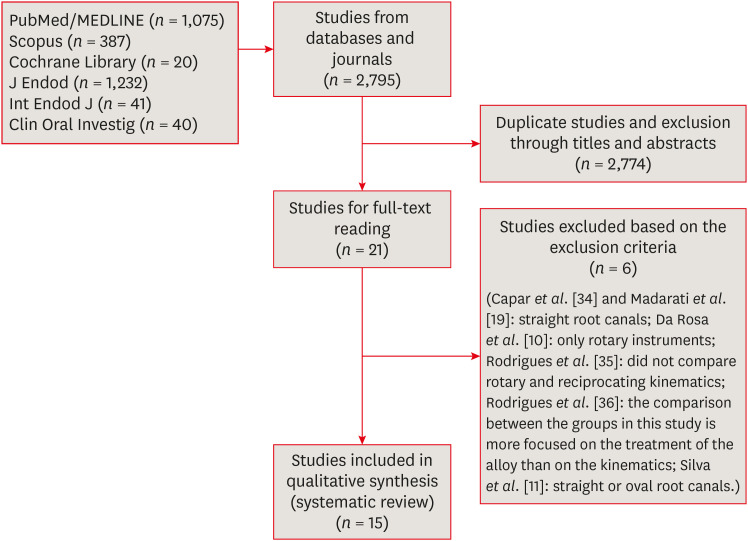
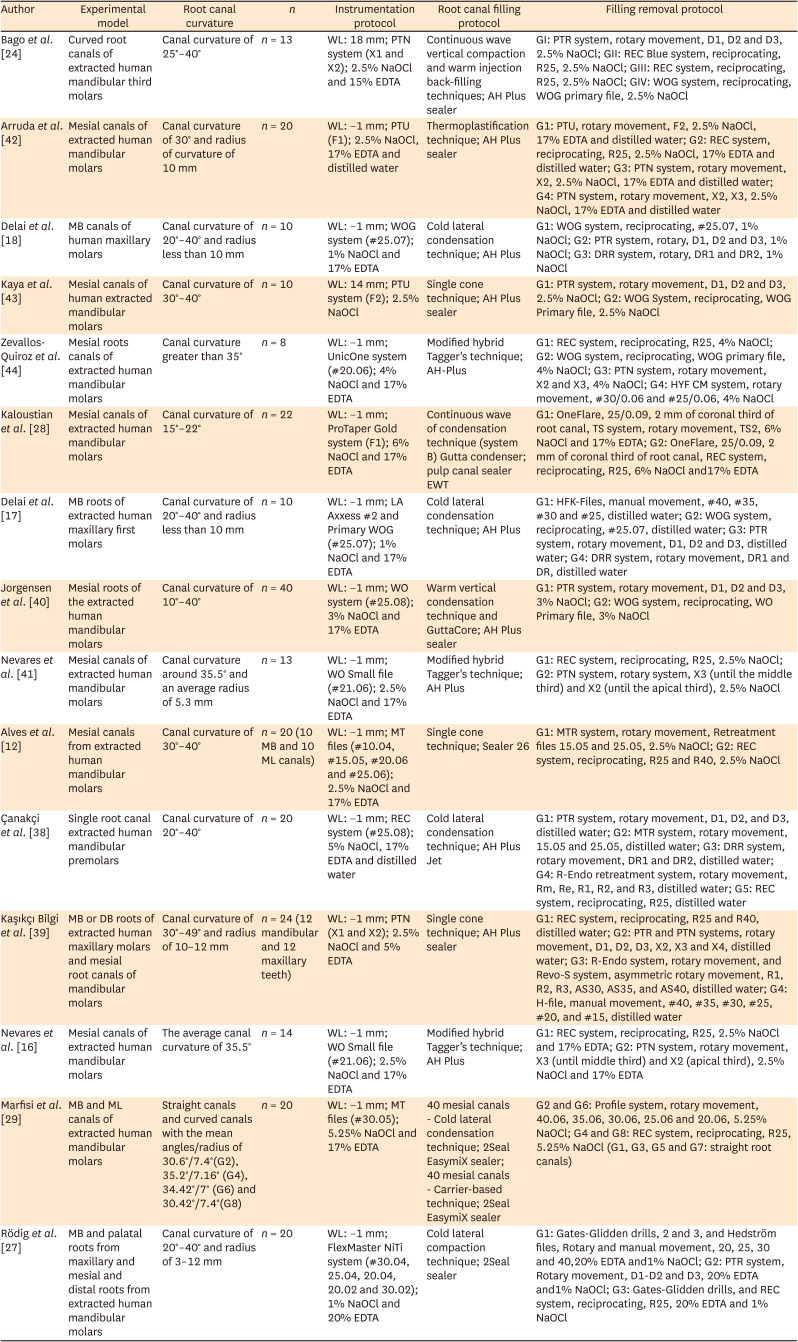
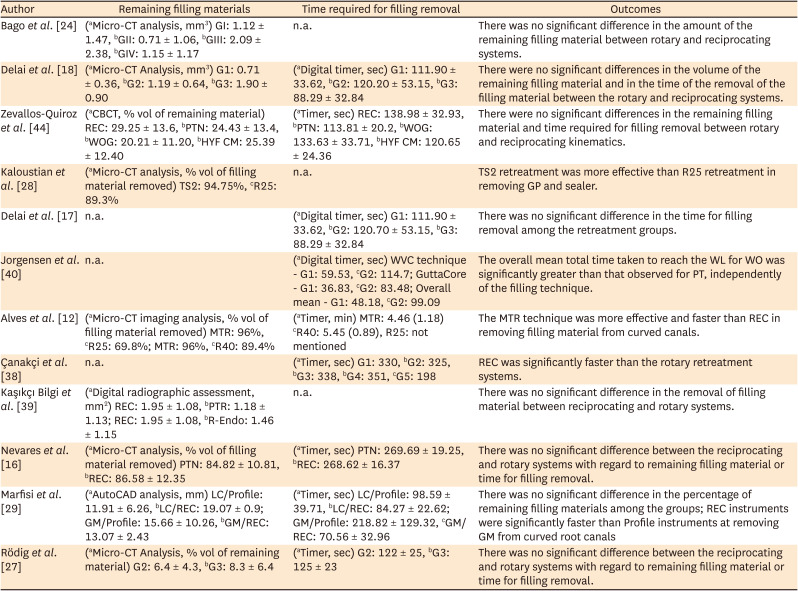
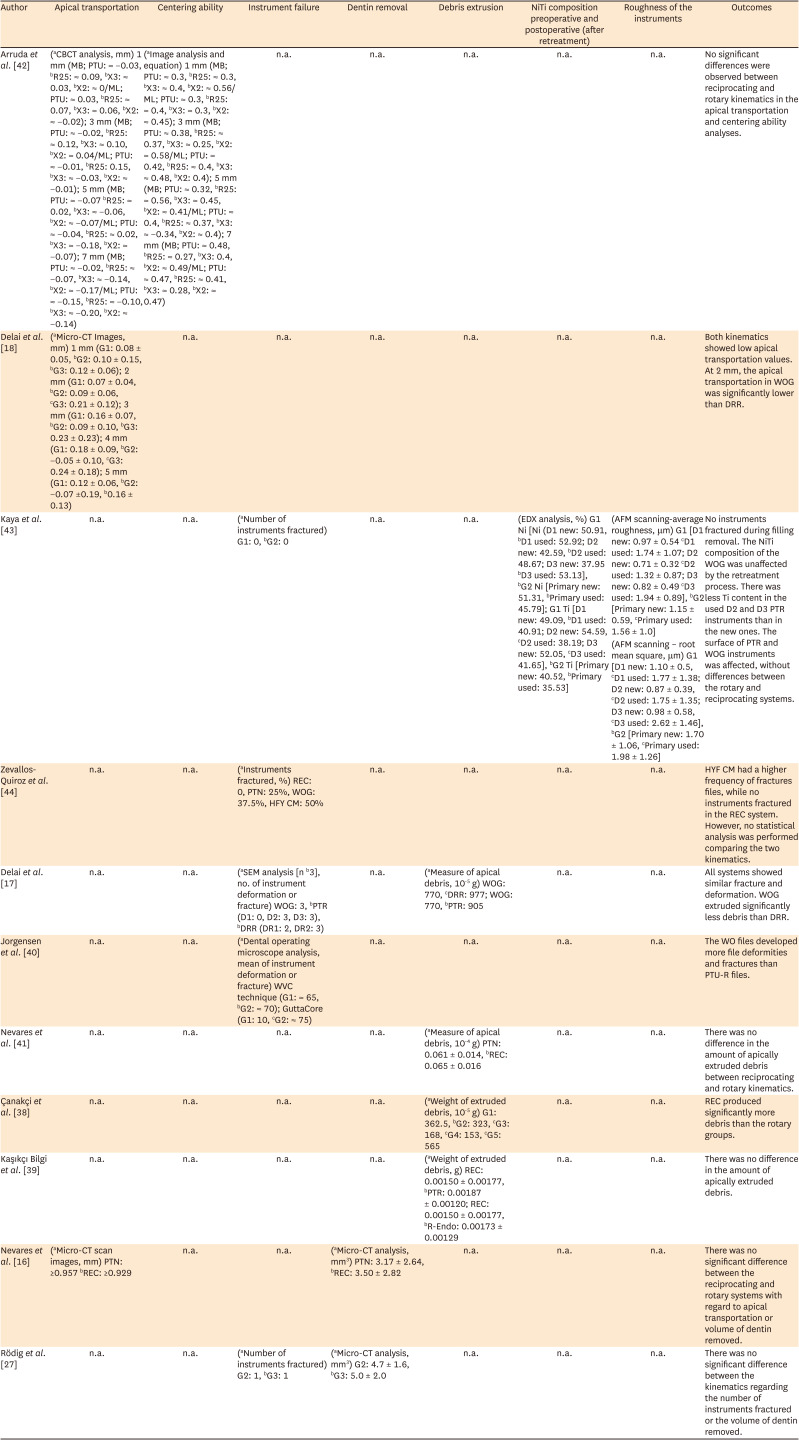
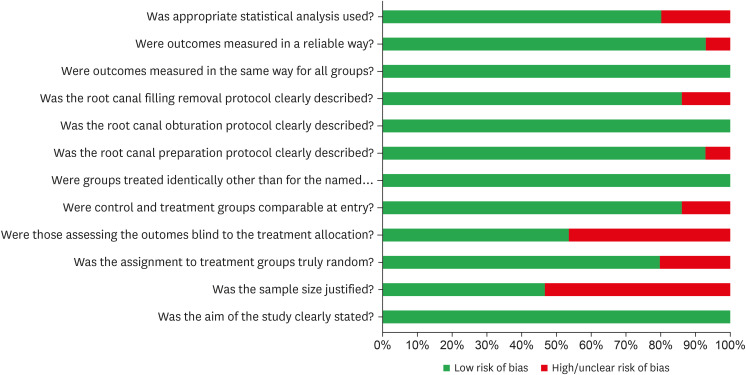




 PDF
PDF Citation
Citation Print
Print



 XML Download
XML Download